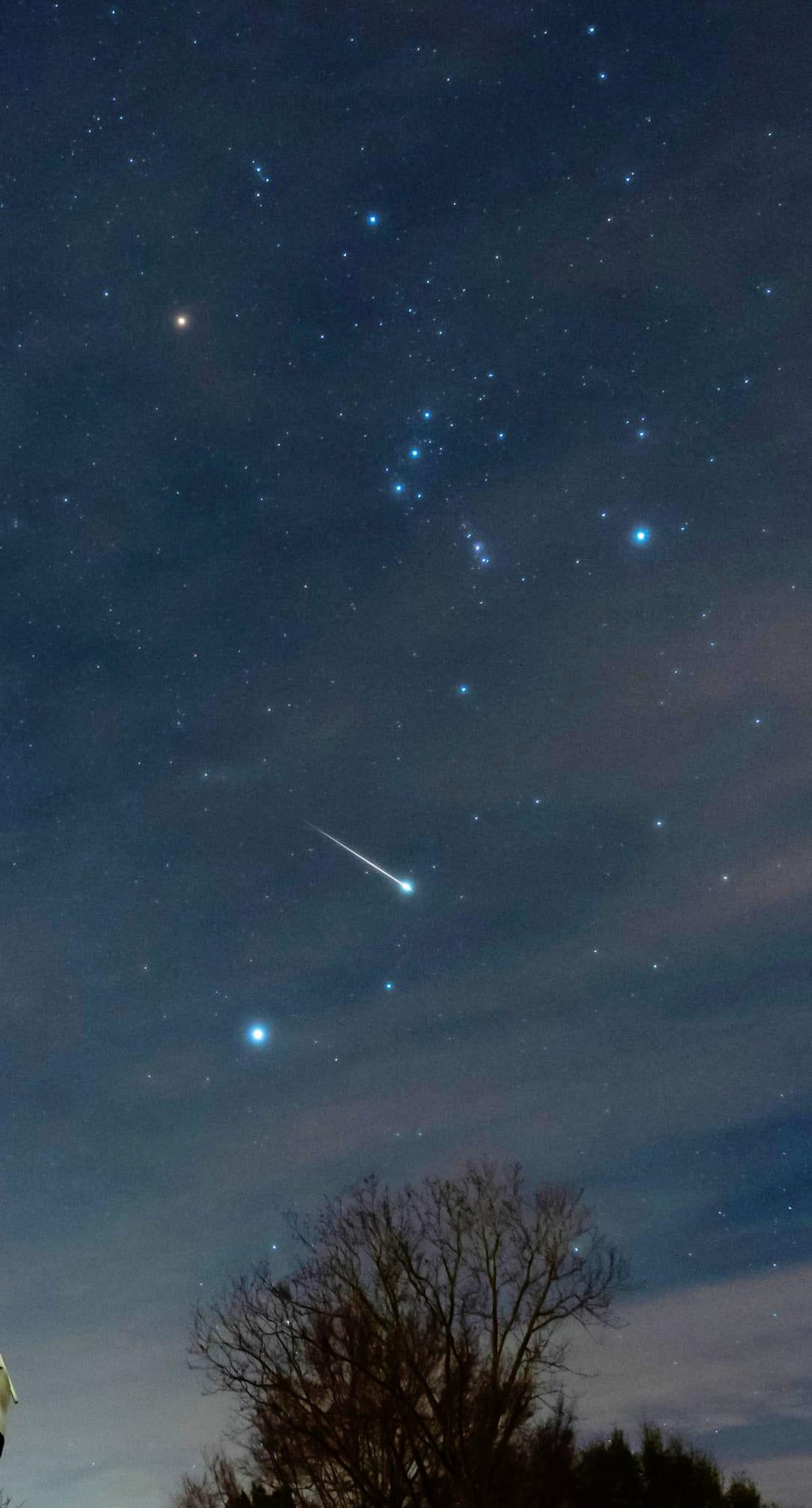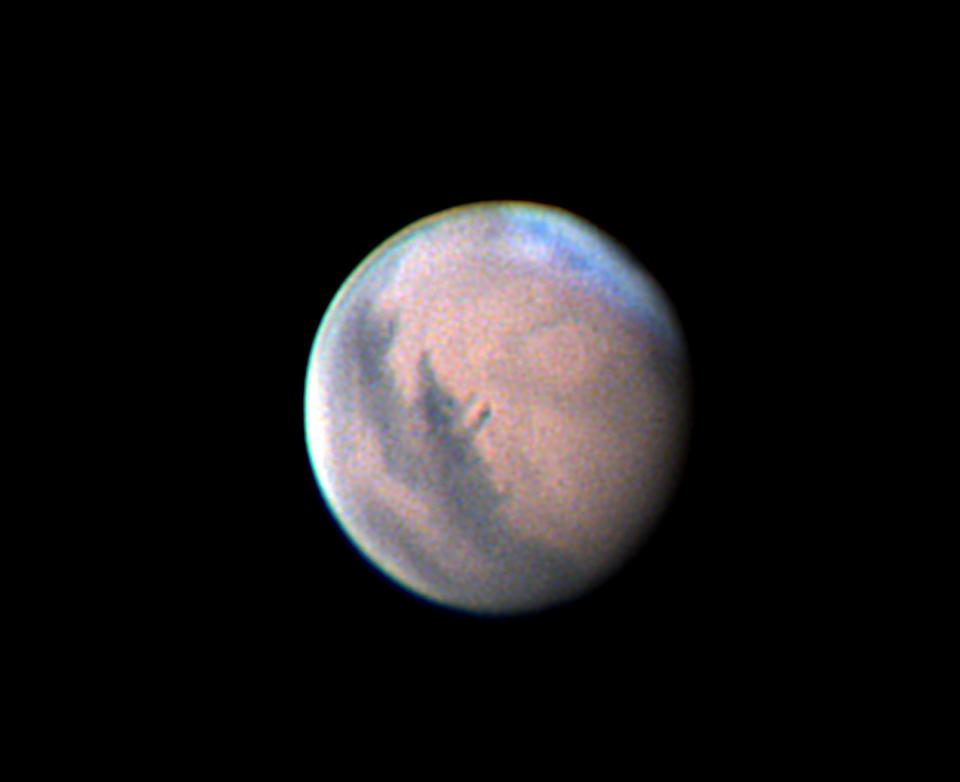Backyard Universe: December brings meteors, Mars to those watching in the Fayetteville area

December night sky watching is great … just chilly.
More bright stars shine in the evening sky this time of year, and this December we have bright planets Saturn and Jupiter visible in the evening. There’s also a close passage of Mars by us early in the month.
The Geminid meteor shower, one of the year’s best, peaks on the night of Wednesday, Dec. 14. Later that night is better as far as meteor numbers, but some Geminids may be seen in the early evening. The best time to watch for the greatest number of meteors will be after midnight when a single observer may see around 100 an hour, but only from a very dark rural location where the entire sky is visible.
This year, however, the waning gibbous moon will be in the sky after midnight, rising locally at 10:58 p.m. on Dec. 14. The bright moon may make fainter Geminid meteors tougher to see, so that could affect the meteor count
The “radiant” of the Geminid shower where all of the Geminid meteors appear to be coming from lies near the star Castor in the constellation Gemini, the twins. That area is high overhead around 2 a.m., so that’s a good time to watch for meteors. The meteors can appear anywhere in the sky.
The shower radiant creates a perspective effect as Earth plows into the stream of particles that create meteor showers. We see a variation of the radiant effect as we drive in a snowstorm at night when all of the snowflakes appear to be coming from a point dead ahead.
Fayetteville-Cumberland Parks and Recreation is holding a free Geminid meteor shower watch event at Lake Rim Park on Tar Kiln Drive in west Fayetteville from 8-10 p.m. on Dec. 14. After a brief indoor program about comets, meteors and asteroids, you’ll then head outside where there will be some general sky watching guidance offered between the meteors as well as views of planets Jupiter, Mars and Saturn.
The event is free but prior registration is required. You can call the park at 910-433-1018 during regular business hours to register. By registering, you’ll be contacted by the park in case the event is canceled due to weather.
If a December evening is clear then it will be cold, so be sure and dress for the cold if you attend.
Mars draws near
Speaking of the planet Mars, the red planet will make a so-so close pass by Earth in early December.

On Thursday, Mars will lie a “close” 50 million miles away.
For a few weeks around that date, owners of good-quality telescopes may be able to glimpse surface features on the distant planet. Mars will still appear small in the telescope eyepiece since the planet is only half the size of Earth.
The first detail noticeable in a Mars telescope view will be the planet’s northern polar cap. A white cloud has covered the north pole of Mars for the past several weeks. Also visible may be some of the dark larger surface features on Mars.
Keep in mind however that Mars is small and is still very far away so larger telescopes will give a better view than smaller instruments.
You don’t need large or small telescopes to see Mars in the sky, however. It appears as a bright reddish object rising in the east as darkness falls. Mars doesn’t twinkle like the surrounding stars and appears as a red ember glowing brightly in the eastern early evening sky.
You can watch the full moon just miss covering Mars around 11 p.m. on the night of Dec. 7. The view in a small telescope and binoculars will show Mars very close to the moon.
There are some close moon encounters with some other evening sky planets. Jupiter will hang to the upper left of the moon on Thursday evening. On Dec. 26, that’s the planet Saturn to the right of the moon.
If you’re getting a telescope for Christmas, a clear Christmas night will show a slim crescent moon above Saturn over in the southwest.
Whether the scope is a gift for a young or older person, the nights after Christmas should offer up nice views of the moon, Saturn, Jupiter and Mars.
If you have a question about astronomy, send it to Backyard Universe P.O. Box 297, Stedman, NC 28391 or email johnnyhorne937@gmail.com
This article originally appeared on The Fayetteville Observer: Geminid meteor shower and Mars visible in Fayetteville, NC

